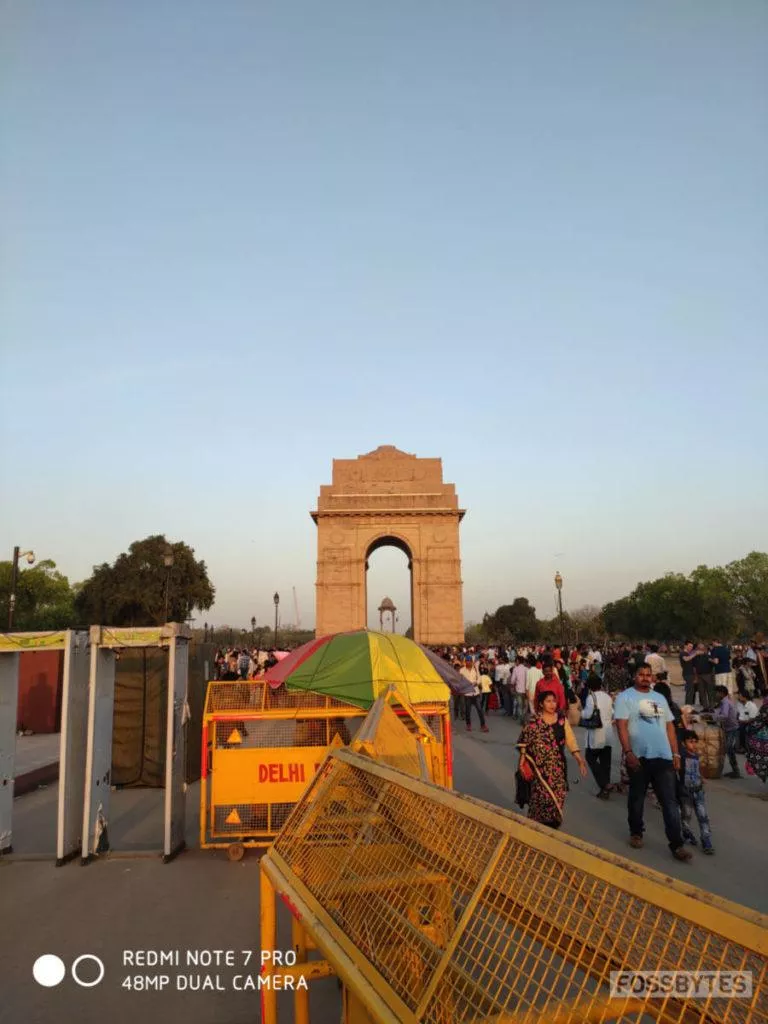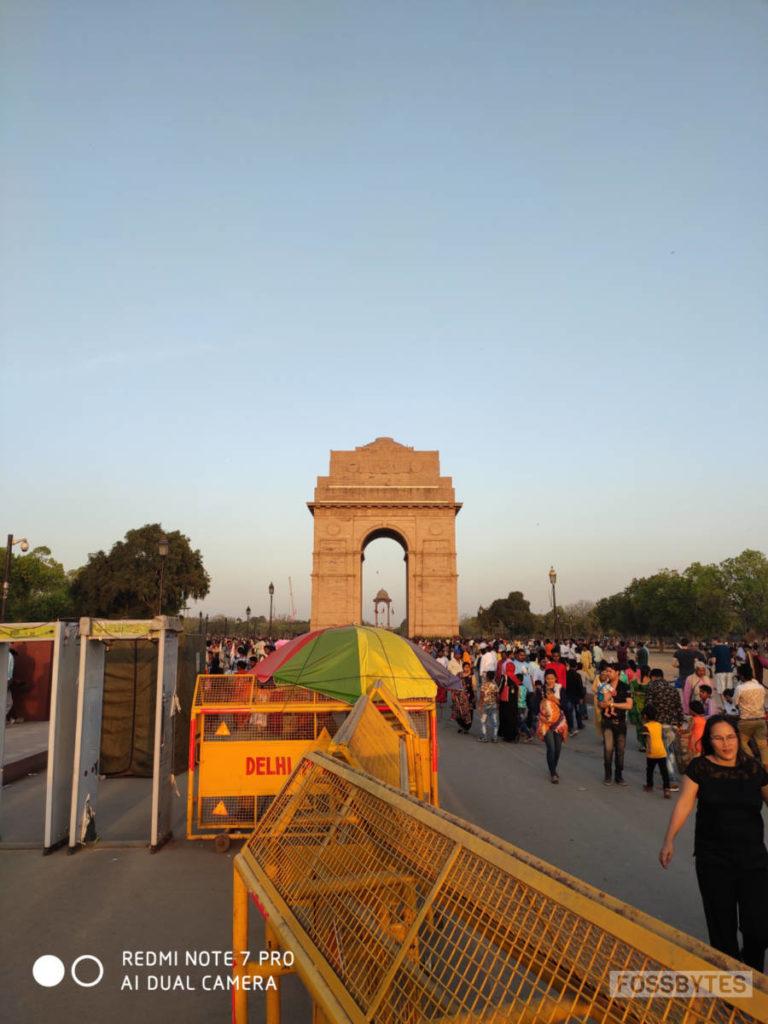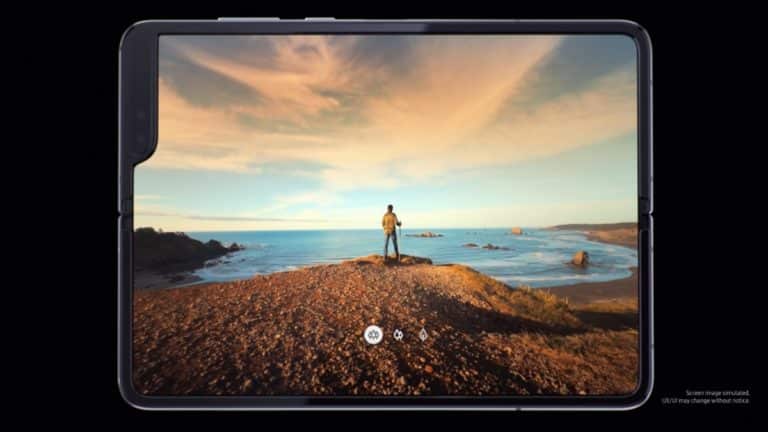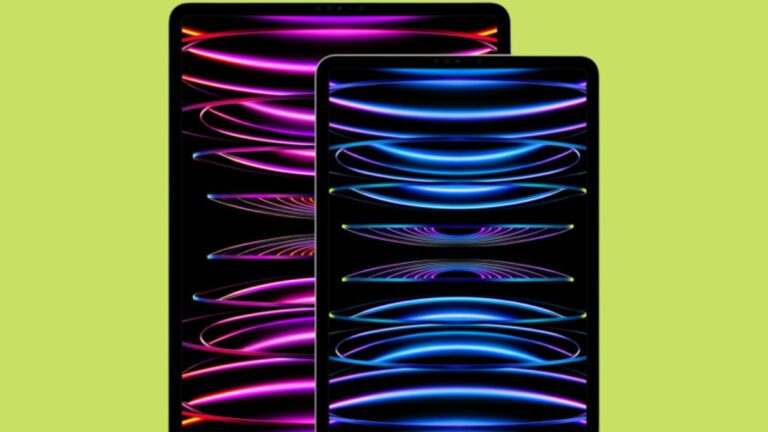Don’t Be Fooled By Redmi Note 7 Pro’s 48MP Camera
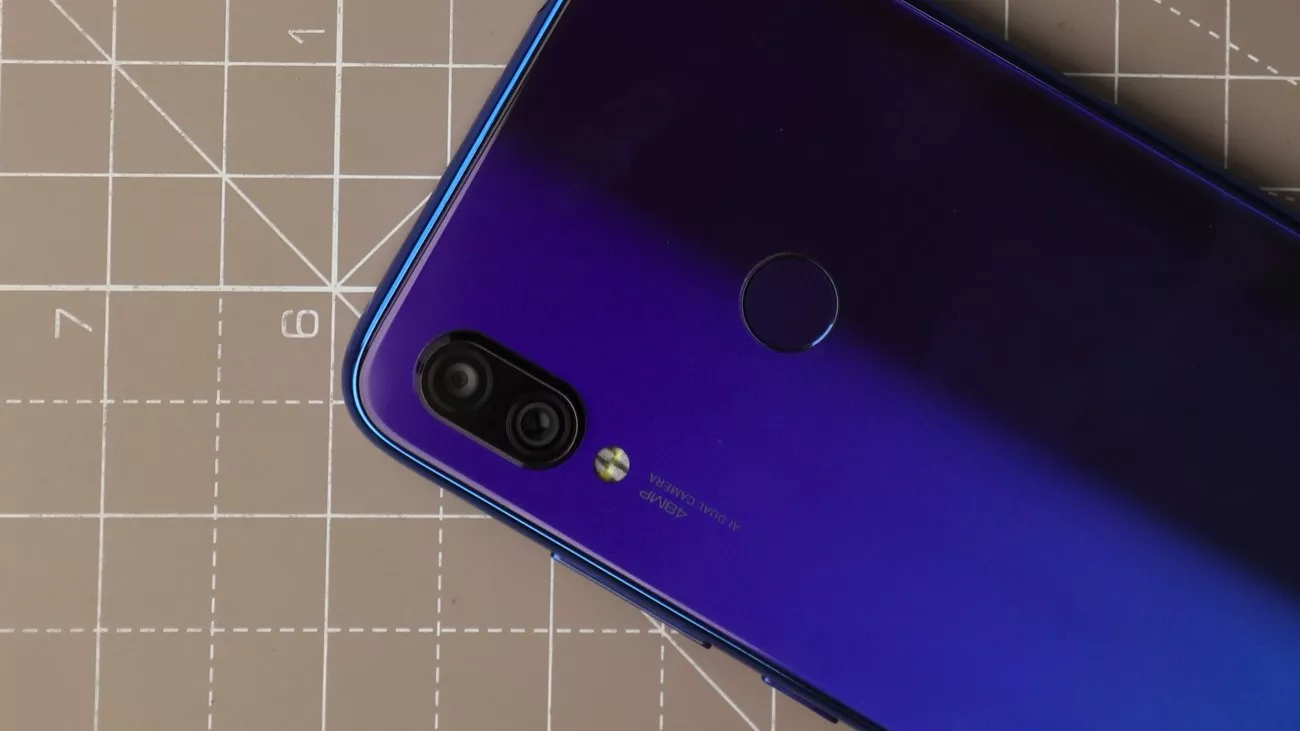
Xiaomi has once again challenged its rivals in the budget segment by launching Redmi Note 7 Pro, which continues the legacy of the Note series by the Chinese smartphone manufacturing company. The phone has been launched at a time when Xiaomi is facing tough competition from the rival brands like Samsung, which has revived its budget smartphone segment by launching Galaxy M20 and M30 smartphones, Oppo, Vivo, and Realme.
However, Xiaomi’s Redmi Note 7 Pro has posed a tough challenge with tonnes of features and affordable pricing and now beating Note 7 Pro in its segment is akin to climbing uphill. One of the biggest features of the smartphone is its much-hyped 48MP camera which is a first in the sub 15K segment.
After the war of the number of cameras ended with Nokia unveiling 5 rear cameras, a new war that involves megapixel count has begun. The Lenovo Z6 Pro has been touted to feature a 100-megapixel camera. Yikes!
Let’s see how Xiaomi Redmi Note 7 Pro 48 Megapixel brings a change (if at all) in smartphone photography and how strong is the Xiaomi’s “48MP Camera Beast” claim.
Redmi Note 7 Pro Camera Specifications
Rear Cameras
- 48MP + 5MP AI Dual camera (Sony IMX586 camera sensor)
- 1.6μm large pixel (4-in-1 Super Pixel)
- PDAF (Phase Detection Auto Focus)
- f/1.79 aperture lens
Front Camera
- 13MP
- AI Portrait mode, background blurring
- AI Beautify
How Does Redmi Note 7 Pro’s 48MP Work?
Xiaomi’s website mentions that the Redmi Note 7 Pro features a 48MP Sony IMX586 camera sensor that captures 4 times the pixels of a typical 12MP camera normally found in other smartphones. These extra pixels add to the resolution and the resulting pictures clicked from the 48MP camera have a resolution of 6000 x 8000.
The 12MP default camera of the smartphone works by using the pixel binning technique. In layman terms, the pixel binning technique involves combining the information from four neighboring pixels and putting it into a large pixel. The resulting super pixel in Note 7 Pro is of 1.6μm.![]()
This approach has been adopted by many other budget as well as premium smartphones, including Huawei Mate 20 Pro, Huawei P20 Pro, and LG G7.
The pixel binning technique is also helpful in keeping the camera bump smaller and improving low-light photography. Well, there are disadvantages as well, for instance increased image size.
Redmi Note 7 Pro 48MP vs 12MP
First of all, if you want to click pictures with the 48MP camera, you have to go to camera settings and select the 48MP mode because the default camera is set to 12MP. Alternatively, you can use the Pro mode if you want to click photos with the 48 megapixel camera.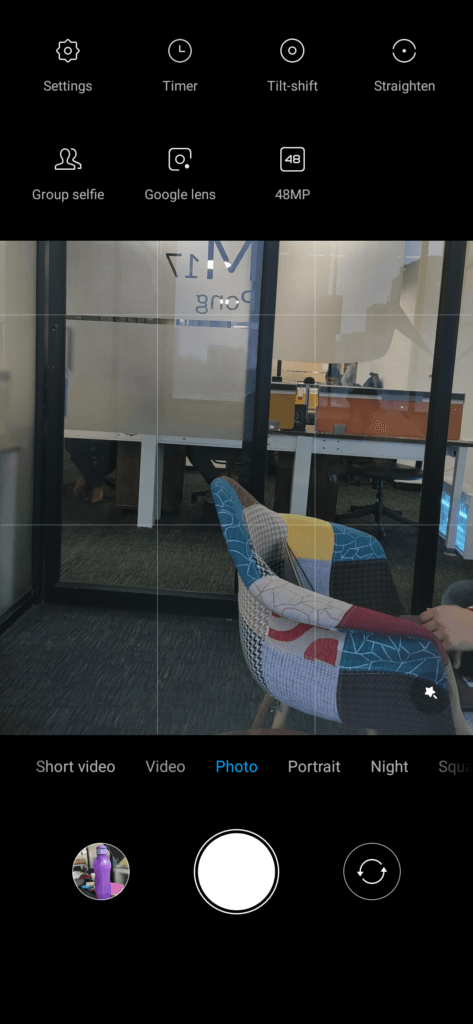
Before delving deep into the difference between RN7 Pro’s 48MP camera and the default 12MP camera, let’s take a blind test.
So here is a Google Drive link to the two photographs clicked from Redmi Note 7 Pro. Without zooming in, can you tell which photo was clicked from the 48MP camera?
If your answer is the first picture then I might have to say that you’re wrong. The second picture has been clicked from the 48MP shooter.
Honestly speaking, it is difficult to tell the difference just by looking at both the pictures, until you zoom in. In fact, the pictures clicked from the default 12MP camera are more crisp and bright.
However, once you zoom in, you’ll be able to see the real work of the Sony sensor.
Difference Lies In Details
Here are some camera samples shot from both the default as well as the 48MP camera.
Notice the clarity and detail in the tree’s trunk upon zooming in on the picture shot with the 48MP camera.
Zoom in on the fingers and notice the difference in detail in both the images.
When scaled, you can see the faces of people clearly in the 48MP image which is a result of increased resolution.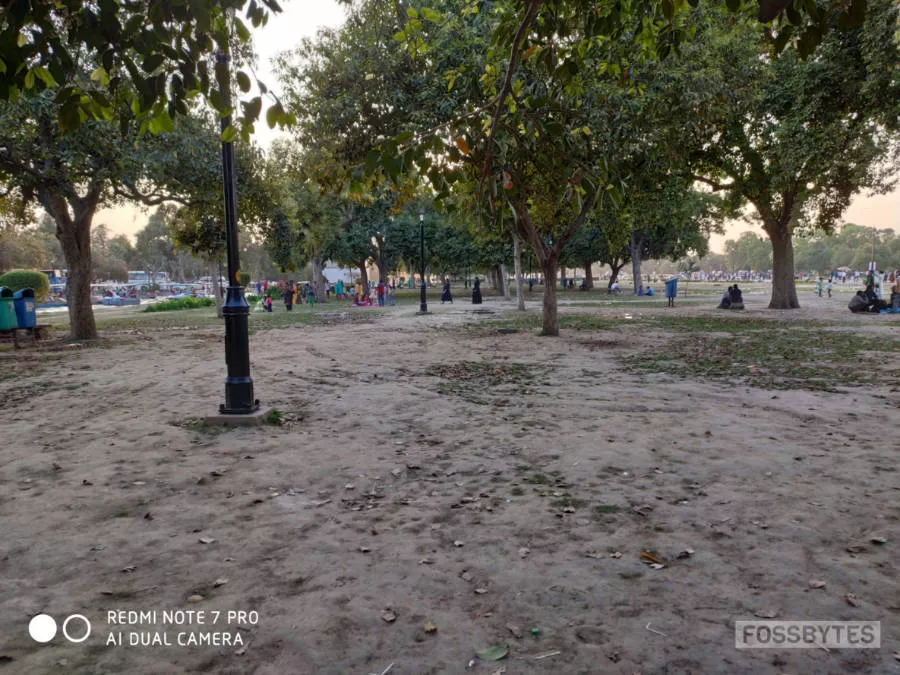
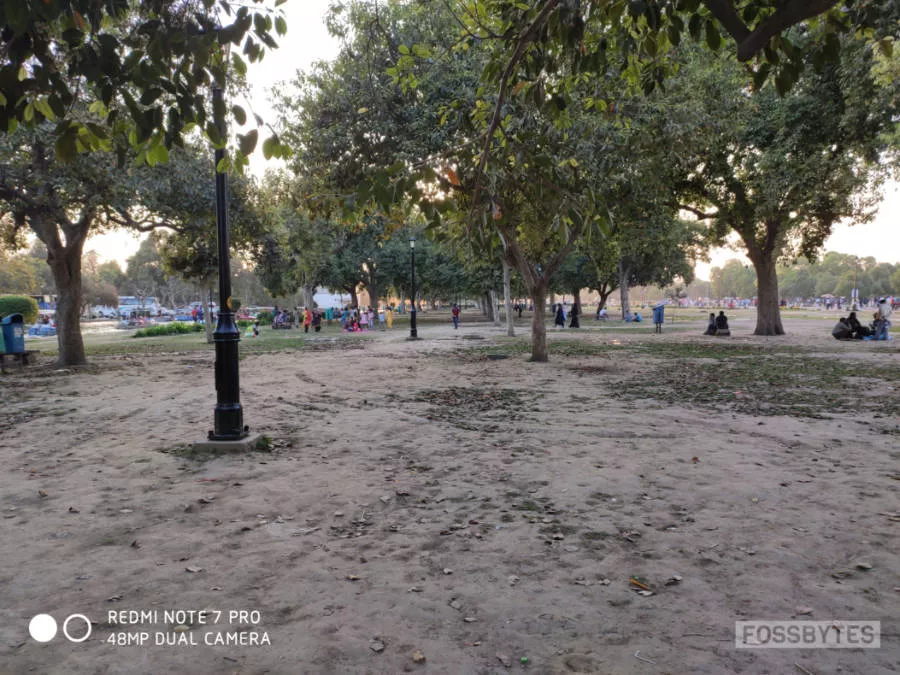
In the above photos, notice that the color of leaves is much better in the one shot with the 12MP camera.
Of course, when you zoom in the 48MP photos, you can clearly see the detail retention and it is the only advantage offered by the mode.
Downsides of a 48MP Camera
A 48MP camera does sound good on paper but there are certain caveats involved in the Redmi Note 7 Pro 48 megapixel camera.
Need To Be Enabled From Camera Settings
If you want to click photographs from the 48MP camera, first you need to enable it from the camera settings or you can use Pro mode for the same. Xiaomi could’ve included the option to enable the 48MP camera somewhere between the different camera modes like Portrait, Night and Square. This would’ve been easier to access than clicking on the hamburger option and then choosing the 48MP option.
Very Large Sized Images
With more pixels comes an increased size of photos. If you want 48 million pixels in the photographs clicked from Redmi Note 7 Pro, be prepared to store images that are as heavy as 20MB in size and have 6000 x 8000 resolution. You certainly wouldn’t want to use the 48MP camera for regular usage and fill up your phone’s internal storage. Also, sharing images on social media websites that are above 15MB is pointless as WhatsApp and Facebook usually compress the uploaded image and thus it will lose the detail.
Enlarged Camera Bump
Cramming a 48MP sensor in a smartphone would definitely lead to a bigger camera bump and Redmi Note 7 Pro is no different. The budget smartphone features a large camera bump which makes the phone wobble at times when placed on an even surface. Needless to say, it is irritating.
Delayed Shutter Speed
When compared to the 12MP camera, 48MP mode suffers from a shutter lag of a few seconds. This is understandable as processing an image of a 6000×8000 resolution surely consumes a lot of processing power.
Best Use Cases Of Redmi Note 7 Pro 48 Megapixel Camera
There are not many situations where I see the 48MP camera proving its worth. But you can use the 6000 x 8000 resolution images if you want to print it on a large canvas owing to the fact that the detail retention of the sensor is excellent.
A multi-megapixel camera could also be quite handy to those who crop photos as scaled pictures also have a decent amount of detail. For photographers and videographers who want something much more portable than a point and shoot camera, Redmi Note 7 Pro could be a good choice.
Does The 48MP Camera In Redmi Note 7 Pro Make Sense?
The 48-megapixel camera surely does wonders and produces sharp images with outstanding detail retention. However, in my opinion, more pixels do not necessarily mean a better photo. If that is the case, the “48MP Camera Beast” tag would’ve been more justified if Xiaomi paired it with a better lens or a bigger sensor.
Also Read: 5 Top Smartphones With 48MP Camera You Need To Know





